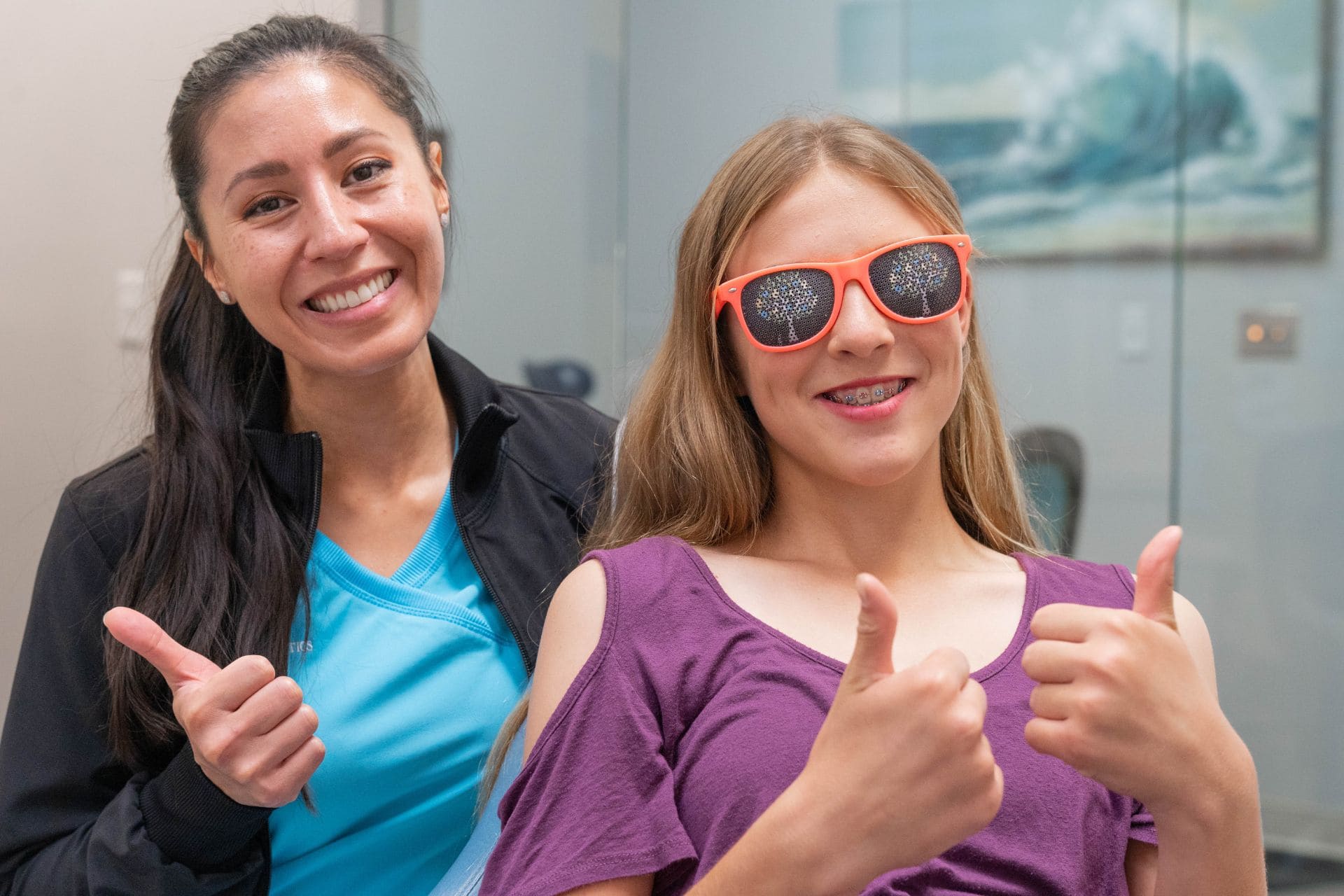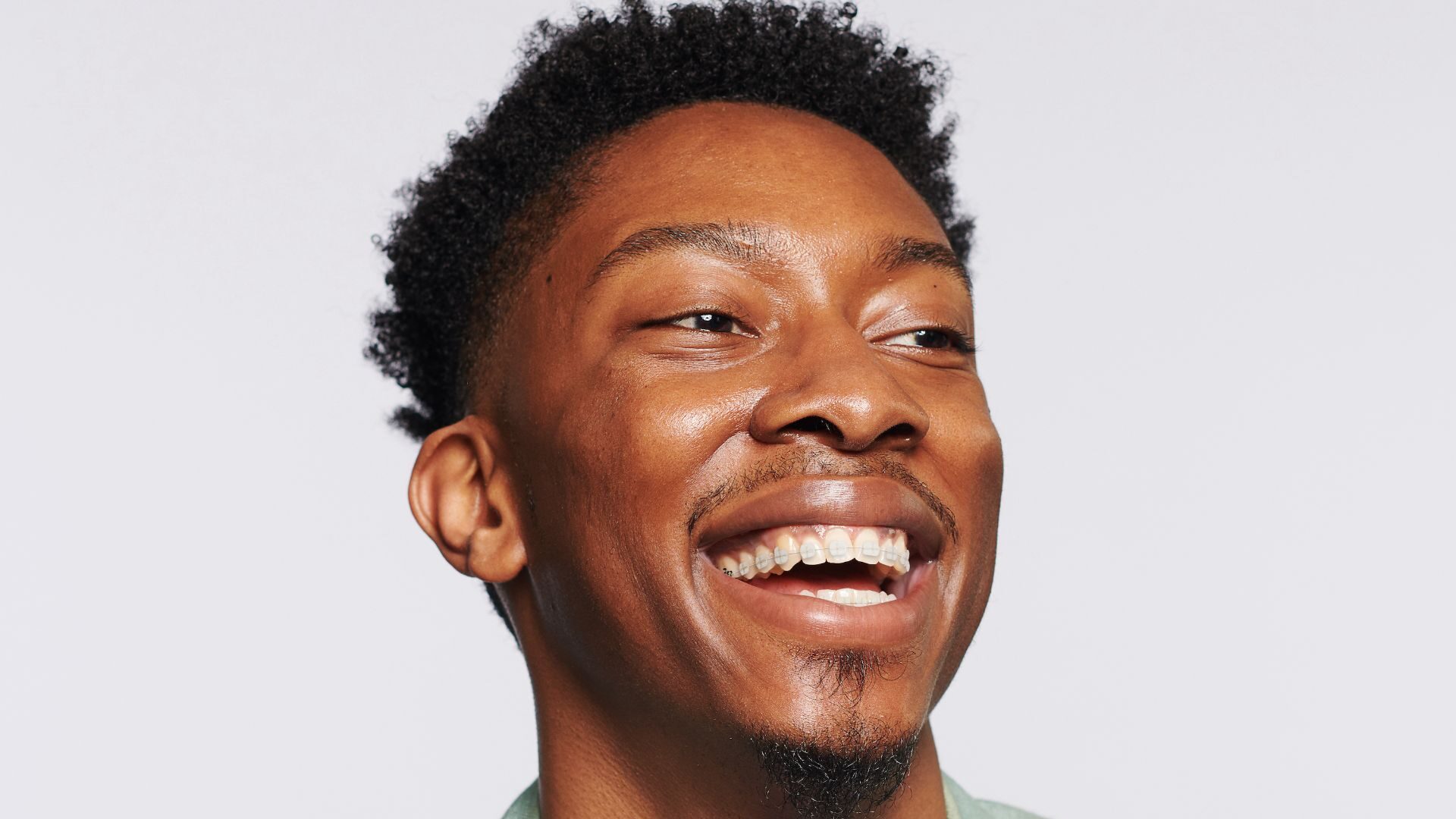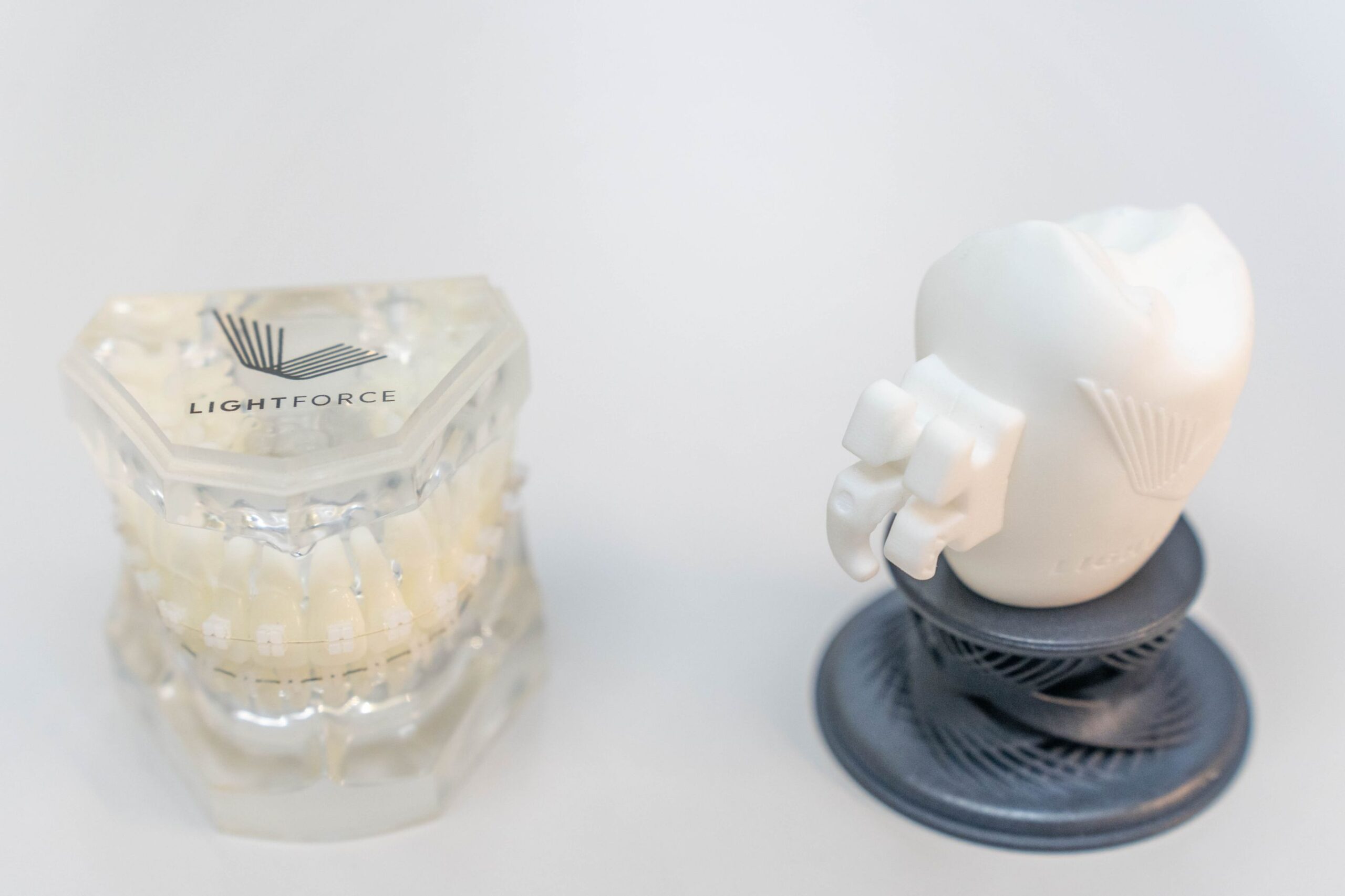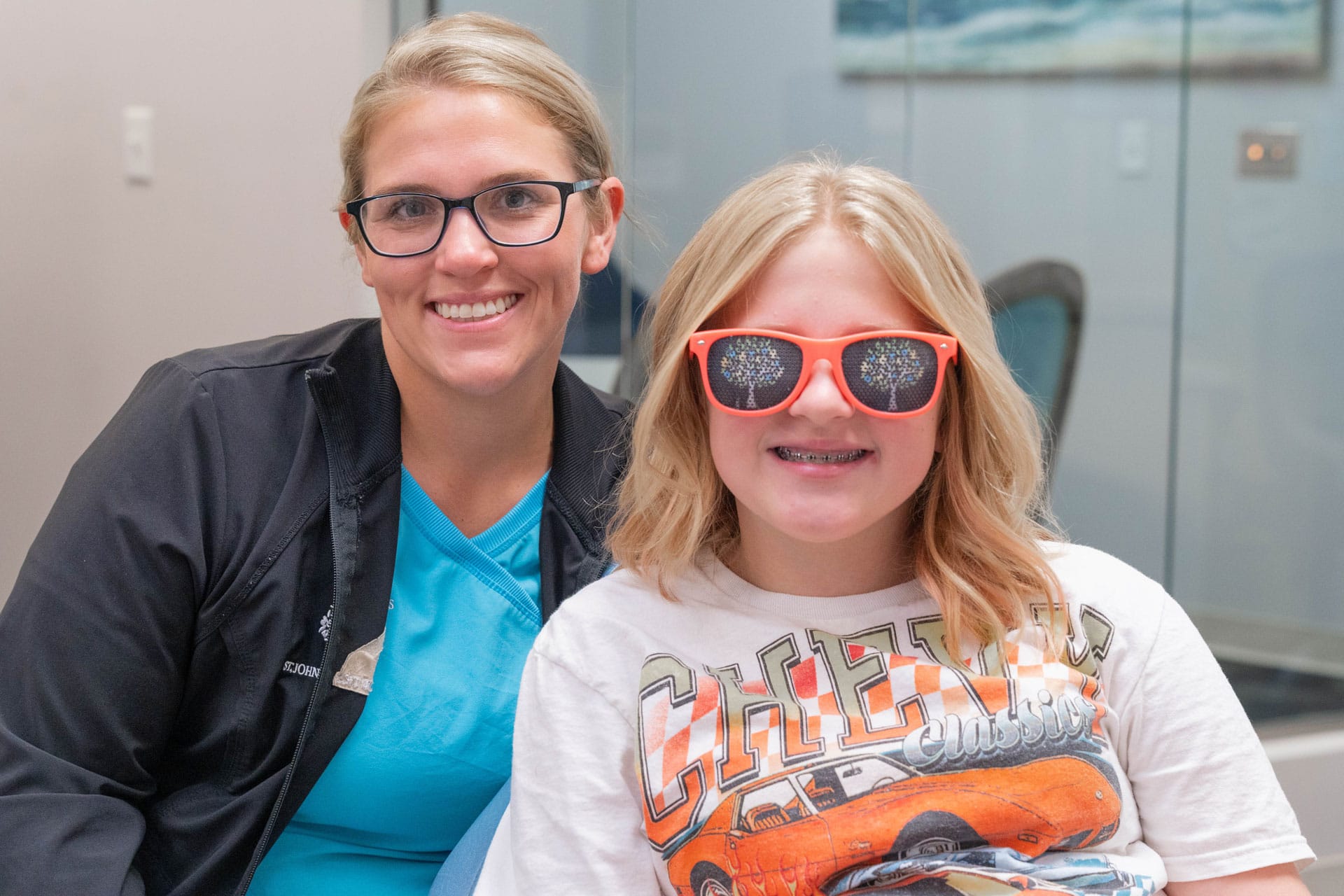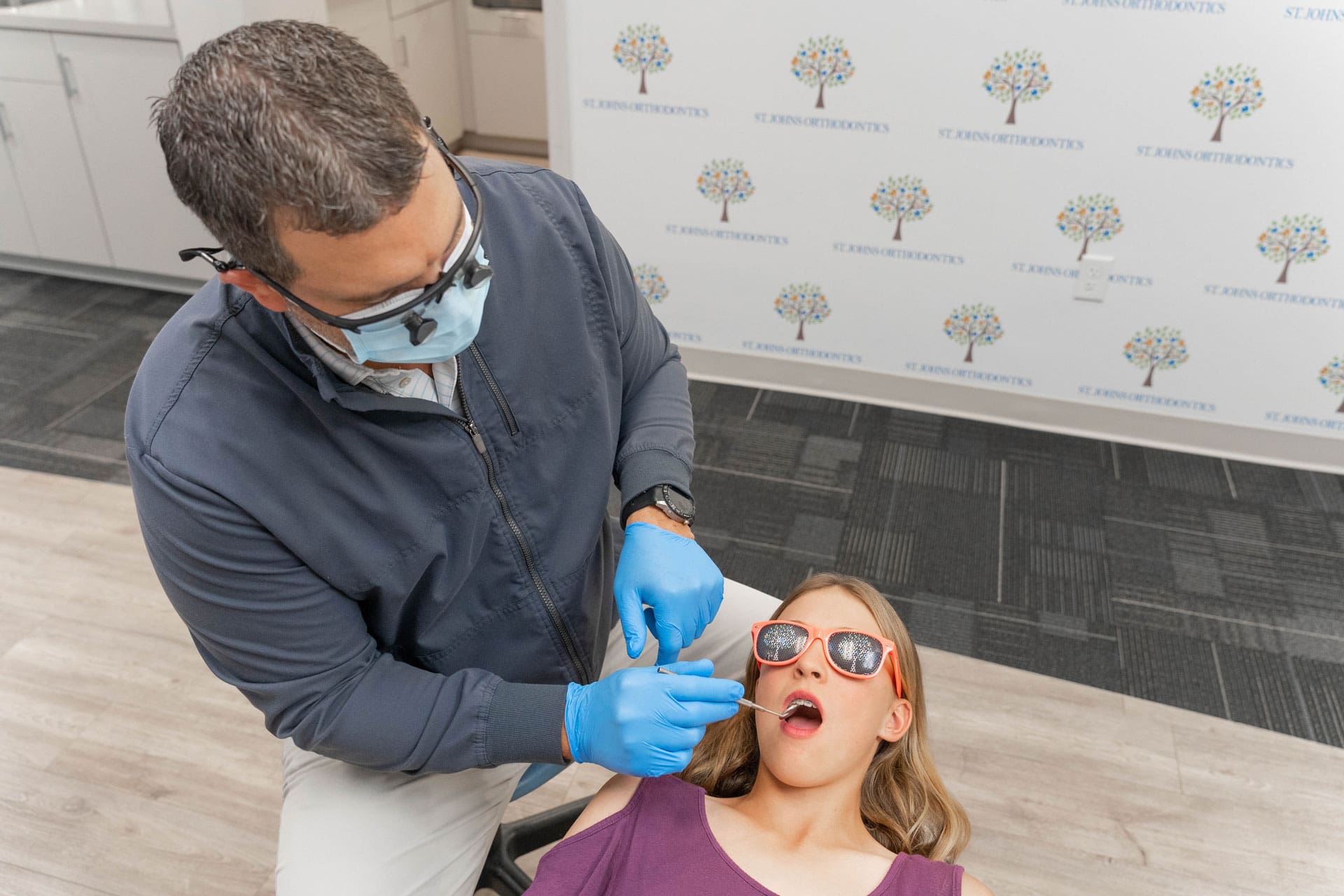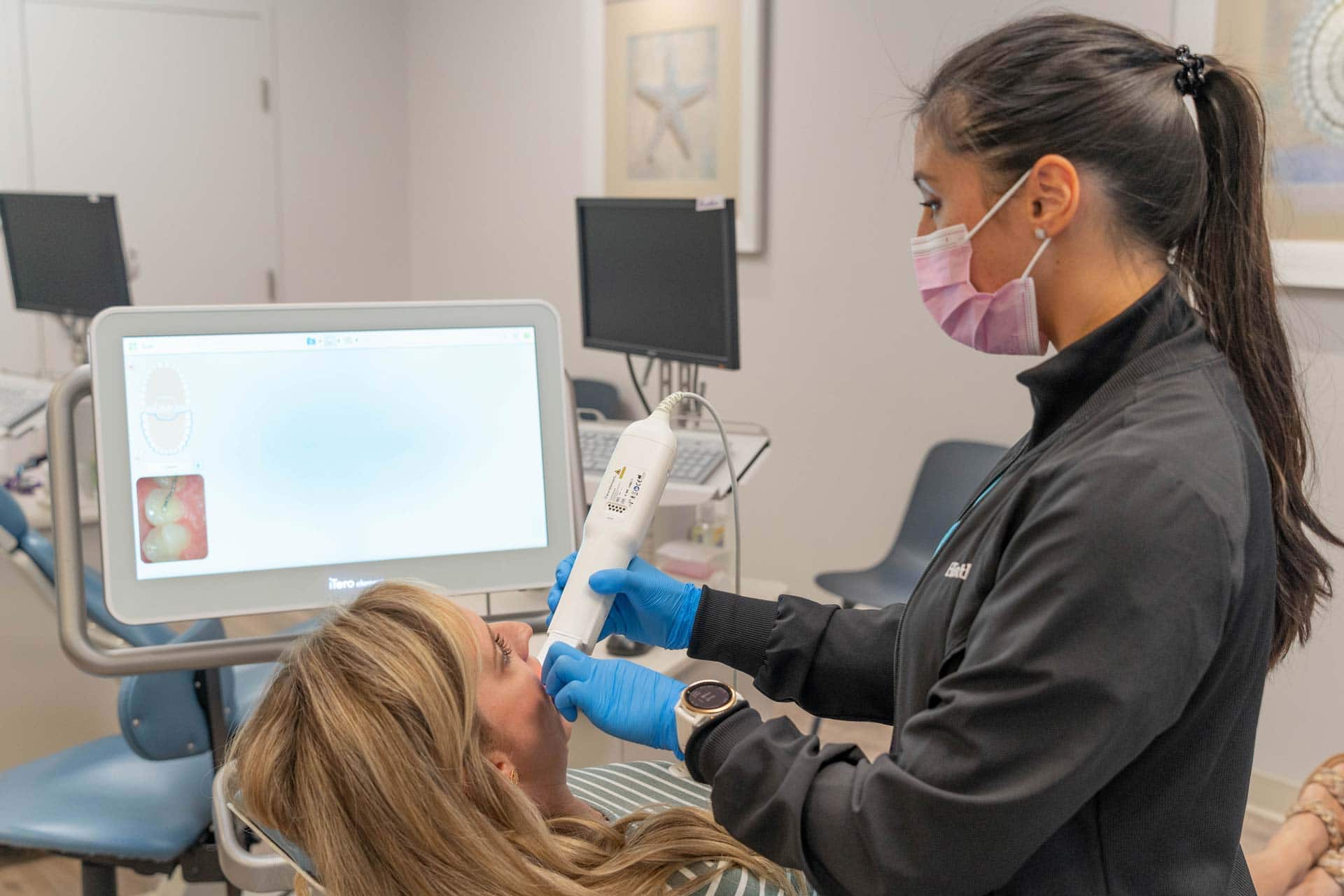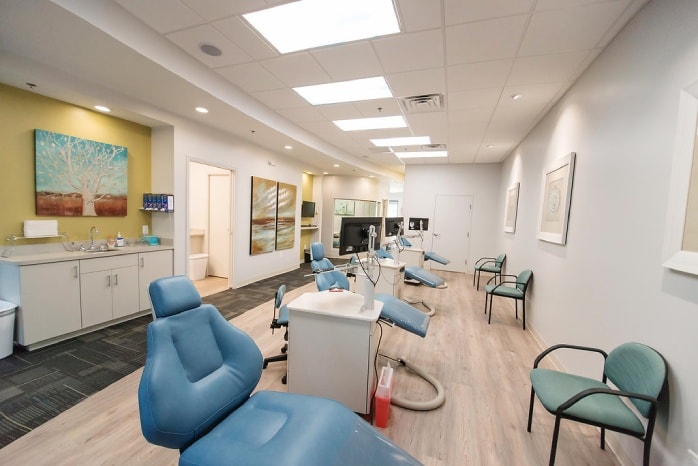Braces In St. Augustine For Kids, Teens & Adults
A Smile Can Change Everything
Types Of Braces
Braces can do more than straighten your teeth. They are an orthodontic treatment that improves oral hygiene and provides proper alignment, which can ease jaw pain and other complications that come from a misaligned bite.
Dr. Ouellette is an orthodontist in St. Augustine, FL, who specializes in providing braces to patients of all ages. From children as young as seven to adults who are deciding to pursue orthodontic treatment later, the friendly team at St. Johns Orthodontics is here to help you find the right braces for your needs.
There are different types of braces available, and at our practice, we offer some of the most advanced options in braces technology. We serve patients of all ages and personalize every treatment to maximize results and improve comfort. Your care matters to us, and we want to make your orthodontic treatment as easy and effective as possible.
Metal
Metal braces are the most common type of braces, and they’ve been around for over 200 years! We know how well they work, and we’ve helped hundreds of patients straighten their smiles with these corrective appliances.
A lot of people may feel nervous about getting braces, and we understand that there is a lot to learn about taking care of them. You will have to avoid certain foods and take additional steps to keep your braces clean, as well as come in for routine adjustments.
Despite the extra work, braces are a good investment that can correct many different problems with your teeth, ranging from general crookedness and gaps to overbites, crossbites, underbites, and open bites.
LightForce
We love embracing clinically proven technology at our office to deliver even greater patient care. One of our favorite modern orthodontic treatments is LightForce. This state-of-the-art technology uses 3D-printed tools to move your teeth and achieve greater alignment.
LightForce offers an unprecedented level of personalized orthodontic treatment. Every patient receives 3D-printed bracket slots that are custom-fitted for their teeth.
These are more accurate than traditional injection-molded slots, which speeds up treatment and improves the quality of your results.
LightForce advantages include:
- Proprietary Technology – The use of 3D bracket slots means your braces treatment is more personalized and effective.
- Comfort – Typical steel wires, NiTi wires, and bent-beta titanium wires exert more force on your teeth, so they can create that telltale discomfort braces patients often lament over. Because LightForce is more gradual, it causes less tension and ultimately delivers a more comfortable experience.
- Fewer Appointments – You need fewer adjustments with LightForce braces, which means you can enjoy straightening your teeth for less time and money spent on orthodontic care.
- 100% Customization – Every LightForce treatment is completely personal, so you get the most comprehensive level of care for your specific orthodontic needs. This leads to greater outcomes and long-lasting results.
Braces For Kids
Children can benefit from braces if they show signs of bite misalignment. For children that need orthodontic treatment, early intervention is always best. It leads to a shorter duration of treatment, more effective results, and more affordable care.
When Should My Child See An Orthodontist?
Every child should visit the orthodontist by no later than age 7. By this time, their permanent molars and incisors have erupted, so the orthodontist can get a good idea of how their teeth are growing and what to expect in the future.
At St. Johns Orthodontics, we welcome new patients every day, and we take joy in helping their little smiles grow up healthy. We can assess your child’s developing teeth to look for signs of overbite or underbite, crossbite, crowding, or excessive gingival display (“gummy smile”).
Dr. Ouellette can determine if your child would benefit from early orthodontic treatment and recommend a personalized course of action. Your child’s oral comfort matters to us. We always take treatment at their pace, walk them through every step, and make orthodontic care as comforting and fun as possible.
With their well-being at the heart of everything we do, you can feel confident knowing that your child’s oral health is in compassionate, caring hands.
Early Treatment With Braces
While we never encourage parents to rush into getting braces for their children, kids can benefit from early intervention at an orthodontist’s recommendation. Through personalized screening and care plans, we can help your child manage issues such as crossbites, open bites, speech impediments, and difficulty chewing.
Early braces treatment ultimately lowers the total amount of time your child has to wear braces. It also improves their results and promotes proper jaw alignment and good oral health in adulthood.
There are many benefits to early orthodontic treatment, and many conditions are easier to resolve if they are treated proactively. Rather than deal with the discomfort, self-consciousness, and even expenses that orthodontic trouble can cause later in life, parents can help their children develop healthy, happy smiles while they’re still growing.
Some of the problems we may suggest braces for in childhood include:
- Large gaps or excess space between teeth
- Underbites or overbites
- Excessive crowding that impacts jaw alignment
- Teeth that have been misaligned due to prolonged thumb-sucking or pacifier use
Braces For Teens
As a teenager, you may find that a gap between your teeth hasn’t closed, or your teeth appear crooked. You may feel embarrassed by your teeth sometimes and even try to avoid showing your beautiful smile to others.
Braces as a teen can help you feel more confident and correct issues with jaw alignment you may have. Although you’re no longer a little kid, you’re still growing, which means braces can help shift issues with your teeth and jaw that would be harder to correct in adulthood.
Dr. Ouellette is here to help you find the right solution for your teeth. He’ll meet with you and your parents or guardian to discuss your corrective options. And don’t worry — we’ll walk you through all the steps for taking care of your braces, so you can maximize their benefits and get the best results.
Advantages of Braces as a Teen
Getting braces is something a lot of teens go through, and you may already have friends who are wearing theirs. There is no right age to get braces — we’ve had patients in their 40s and 50s come to us for treatment!
While there is never a wrong age for treatment, getting braces as a teenager has a few key benefits:
- Early correction of misalignment can lead to greater results.
- Because you’re still growing, braces can move your jaw and give you a straighter smile as an adult.
- Correcting orthodontic issues like crowded or overlapping teeth as a teen may take less time than it would later in life.
Dr. Ouellette is here to help. He and our friendly team at St. Johns Orthodontics will answer all your questions about braces and find the right solution for your teeth.
Signs You Need Orthodontic Treatment
How do you tell if you need braces as a teen? Getting an assessment from an orthodontist is the only way to know for sure. However, these signs can give you a good idea of whether or not you may benefit from getting braces:
- Your teeth are crowded together or overlap one another.
- There are spaces or gaps between your teeth.
- Your top teeth are over your bottom teeth (overbite).
- Your bottom teeth extend over your top teeth (underbite).
- Your jaw seems crooked or goes to one side.
- Your teeth don’t line up when your mouth is closed (crossbite).
- Your tongue presses between your teeth (tongue thrust).
- You experience any issues with your sleep, chewing, or speech because of your teeth or jaw.
Ask your parents to request a free consultation with us today! We’d love to meet you and help you find out if you would benefit from braces.
Braces For Adults
Whether you couldn’t get braces as a child or didn’t finish treatment, you can still get braces as an adult and achieve the smile of your dreams. Many of our adult patients come to us because they could not get braces when they were teenagers, and they now have the ability to pay for them using dental insurance and our flexible payment plans.
Other patients got braces but didn’t follow through with their retainers and now they’re looking to start again. No matter what your experience is, we are here to help you love your smile with personalized braces treatment.
Am I Too Old for Orthodontic Treatment?
No one is too old to get braces. Orthodontic treatment is beneficial at every age. While treatment can be shorter and easier for children, that does not mean adults can’t benefit from braces or other orthodontic treatments.
We’ve treated patients in their 20s through 70s. Your smile never gets old, and you always deserve the best orthodontic care. We welcome you to reach out to the friendly team here at St. Johns Orthodontics and connect with Dr. Ouellette. Getting orthodontic treatment at any age is a great way to improve your self-confidence and overall health.
What Makes Adult Braces Different?
Braces work the same at every age — they gradually move your teeth together and help shift your teeth and jaw into proper alignment. The difference we see most in adults is a history of dental work that may require additional care in our plan, like bridges or crowns.
We also make sure that adult braces are fitted according to your face structure to protect your gum and jaw health. Kids and teens have more malleability, so their jaws shift more easily.
As an adult, your bone structure is established, so we need to accommodate that as we fit your braces.
Learn more about getting braces in St. Augustine, FL, by visiting us at St. Johns Orthodontics. You can request a free consultation on our website to book an appointment with Dr. Ouellette. We look forward to meeting you!
Braces FAQ
The amount of time spent in braces will vary depending on the individual patient because every smile responds differently to treatment. Treatment times can take anywhere between six and 30 months, but most standard treatments take about 22 months.
The amount of time spent in braces will vary depending on the individual patient because every smile responds differently to treatment. Treatment times can take anywhere between six and 30 months, but most standard treatments take about 22 months.
Braces do not often hurt though you may feel a small amount of discomfort for a couple of days as your teeth, gums, cheeks, and mouth get used to your new braces.
Playing an instrument or a contact sport may require some adjustment when you first get your braces, but wearing braces will not stop you from participating in any of your school activities. If you play a contact sport, it is recommended that you wear a mouthguard to protect your braces or appliance.
Yes! In fact, it’s even more important that patients receiving orthodontic treatment visit their dentist regularly. With braces, food may be caught in places that your toothbrush can’t reach. This causes bacteria to build up that can lead to cavities, gingivitis, and gum disease. Your dentist will work closely with your orthodontist to make sure that your teeth stay clean and healthy while wearing braces.
With braces, you should brush your teeth at least three times a day to keep your teeth, gums, and mouth healthy and clean. Brushing regularly will help remove any food that may be caught between the braces. You should also floss daily to get in between your braces where your brush isn’t able to reach. Your orthodontist can show you how to properly brush and floss once your braces are placed.
Don’t worry, you’ll be eating popcorn and snacking on potato chips again in no time! However, before you can start enjoying some of the treats you love, you will need to take special care to avoid any foods that could damage your new appliances.
Foods to avoid with braces:
- Chewy foods — bagels, licorice
- Crunchy foods — popcorn, chips, ice
- Sticky foods — caramel candies, chewing gum
- Hard foods — nuts, hard candies
- Foods that require biting into — corn on the cob, apples, carrots
Foods you CAN eat with braces:
- Dairy — soft cheese, pudding, milk-based drinks
- Breads — soft tortillas, pancakes, muffins without nuts
- Grains — pasta, soft cooked rice
- Meats/poultry — soft cooked chicken, meatballs, lunch meats
- Seafood — tuna, salmon, crab cakes
- Vegetables — mashed potatoes, steamed spinach, beans
- Fruits — applesauce, bananas, fruit juice
- Treats — ice cream without nuts, milkshakes, Jell-O, soft cake
